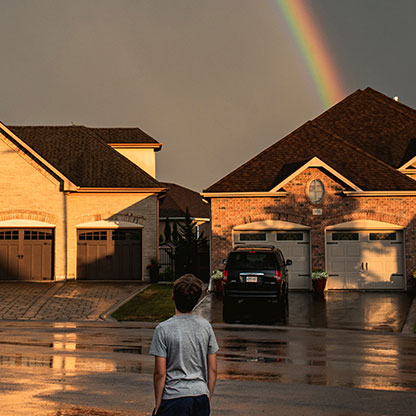3. Turn off power and gas
When dealing with potential flooding, the NSW State Emergency Service suggests to immediately disconnect your electricity, gas and water for safety reasons. Check with your electricity, water and gas providers on their recommended action plan.
4. Take steps to minimise damage
If a flood warning is issued, you can reduce the amount of damage to your belongings by rolling up rugs/carpet, move furniture, electrical items and valuables to a higher level, as summarised by Department of Fire & Emergency Services - Prepare for flooding.
To help prevent a backflow of sewage, you could place a strong bag filled with sand or earth in toilet bowls and over shower and bath drains.
5. Make an evacuation plan
Check with your local council about safe routes and evacuation centres – so you know where to go if your home is no longer safe. It’s a good idea for all family members to be aware of the evacuation plan, and how you will find each other if you become separated.
6. Decide what to take
Where possible, you can prepare an emergency kit in advance, including first aid and medications, a torch, food and water, blankets and dry clothing, and important documents. Store any documents or photographs in a waterproof bag to help protect them from water damage.
Your car is a valuable asset, and even more important if you need it to get away following a disaster. In a flood, consider where your car will be safest – whether it’s on high ground or in a garage.
And of course, remember it is not considered safe to attempt to drive in floodwaters – just 15cm of water can cause you to lose control.
8. Stay safe
Your safety is paramount and it’s important not to compromise this at any time. While you may want to protect your home and belongings, consider what you need to prioritise if the flood is advancing.
As advised by the NSW State Emergency Services, it’s not considered safe to walk or drive in floodwaters. As well as hidden hazards and contamination, there’s the risk of being swept away.
9. Check your insurance
Check your home and car insurance regularly and ensure your cover is adequate and up to date. This can include checking if your insurance policy includes flood or understanding the inclusions and exclusions of flood cover in case you need to make a claim. For instance, does your policy cover loss or damage to retaining walls or pool and spa liners?
Generally, there’s a 48-hour waiting period after starting a policy before you can claim on flood damage. Check your policy, as waiting periods vary with each insurer.
You can get help estimating the replacement cost of your building and contents using the Building Insurance Calculator or Contents Insurance Calculator as a guide.



